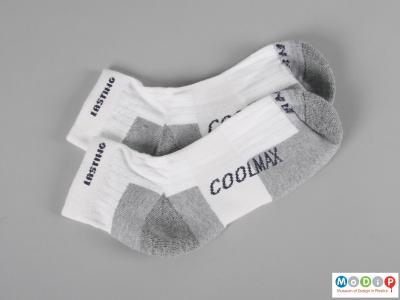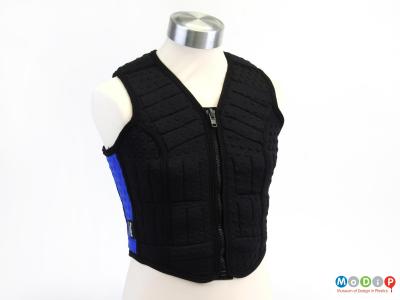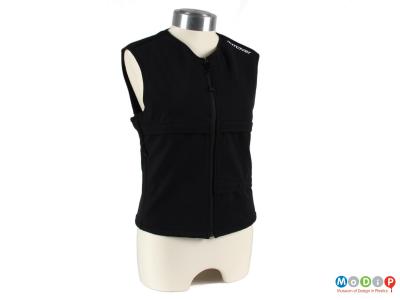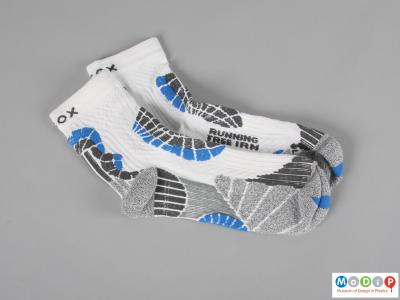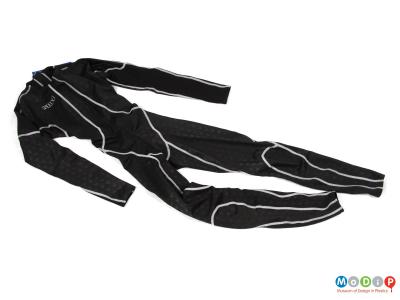The maintenance of optimum body temperature is vital not only for comfort but also because it enables muscles to perform better and tire slower. High-tech plastic-based fabrics can be given characteristics that enable them to out-perform traditional materials in a number of different ways.
The key to keeping cool is evaporation. Cotton, silk and linen absorb moisture but do not encourage its evaporation. Thus the weight of the moisture is added to that of the already heavier yarn. The plastics most used for moisture transport are nylon, polyester and polypropylene, the latter the lightest of all man-made fibres. Naturally water repellent, they can also be shaped to optimise capillary action and to provide a larger outside surface to speed evaporation. The Coolmax® running sock (1) is made predominantly from such a four-duct polyester fibre.
Warmth is achieved by trapping air warmed by the body within the fibres. Among fabrics that do this is Thermolite®, a hollow polyester fibre, which provides warmth without weight. Such are 50% of the fibres in the ski sock (2). Their hollow centres also act as capillaries, helping to wick away any moisture that would otherwise act as a conductor of the built-up heat.
Recently bio-mimetic materials, such as Stomatex®, the key to the success of the Power Suit vest (3), have also been developed. Made of non-porous polyester, the membrane is patterned with dome-shaped chambers, each with a tiny pore in the centre, which flex and stretch with the movement of the body. As a result excess heat and perspiration are pumped out of the small pores and drier cooler air enters at a pace in keeping with the pace of activity, creating a constant microclimate between the fabric and the skin. The material is said to breathe like a leaf.
Plastic-based fabrics are also being developed that can themselves sense and adjust to change. Diaplex®, laminated between a Merino wool lining and a Lycra® exterior, in the Mover vest (4) is an example. It is a form of polyurethane that is non-porous when cool but which, at a pre-ordained temperature, becomes porous. It continually responds to temperature fluctuations assuring optimum comfort in any environment. This technology is called phase change.
The Outlast® sock (5) is made of a form of acrylic with integrated micro-capsules called thermocules that take heat away, store it, and then release it back to the body when required.
Plastic-based fabrics can also combat sports ailments. The Running Free sock (6) has polytetrafluoroethylene (better known as Teflon) fibre woven into the toe and heel to prevent blisters. The X-Static sock (7) has antimicrobial additives introduced to the recipe, otherwise a mix of polyester, polyamide and Lycra®, before extrusion of the fibre. They inhibit growth of bacteria such as result in athletes' foot.
The impact of plastic based fabrics on performance is such that questions have been asked about the ethics of their use. In particular the Speedo Fastskin (8) is made of a stretch material that streamlines the swimmer's body, encourages correct posture and movement, and includes a texture based on that of a shark's skin, which eliminates drag. Launched at the 2000 Olympics, swimmers wearing it broke 13 of the 15 world records.

